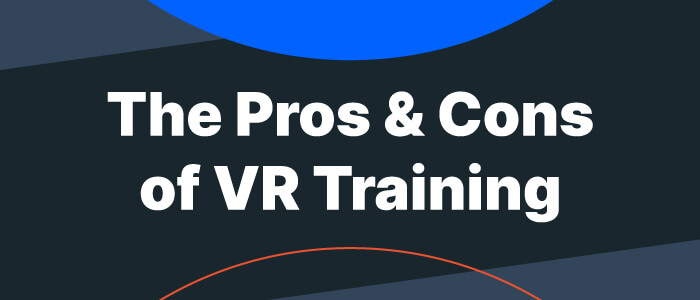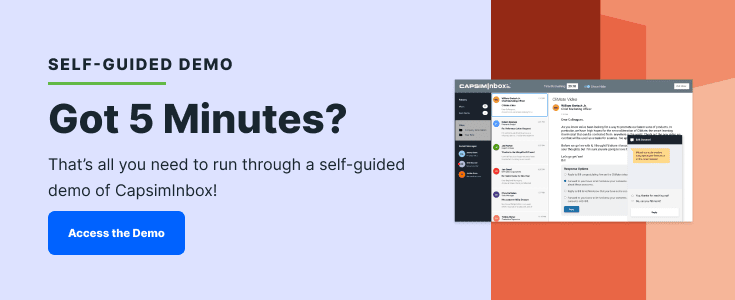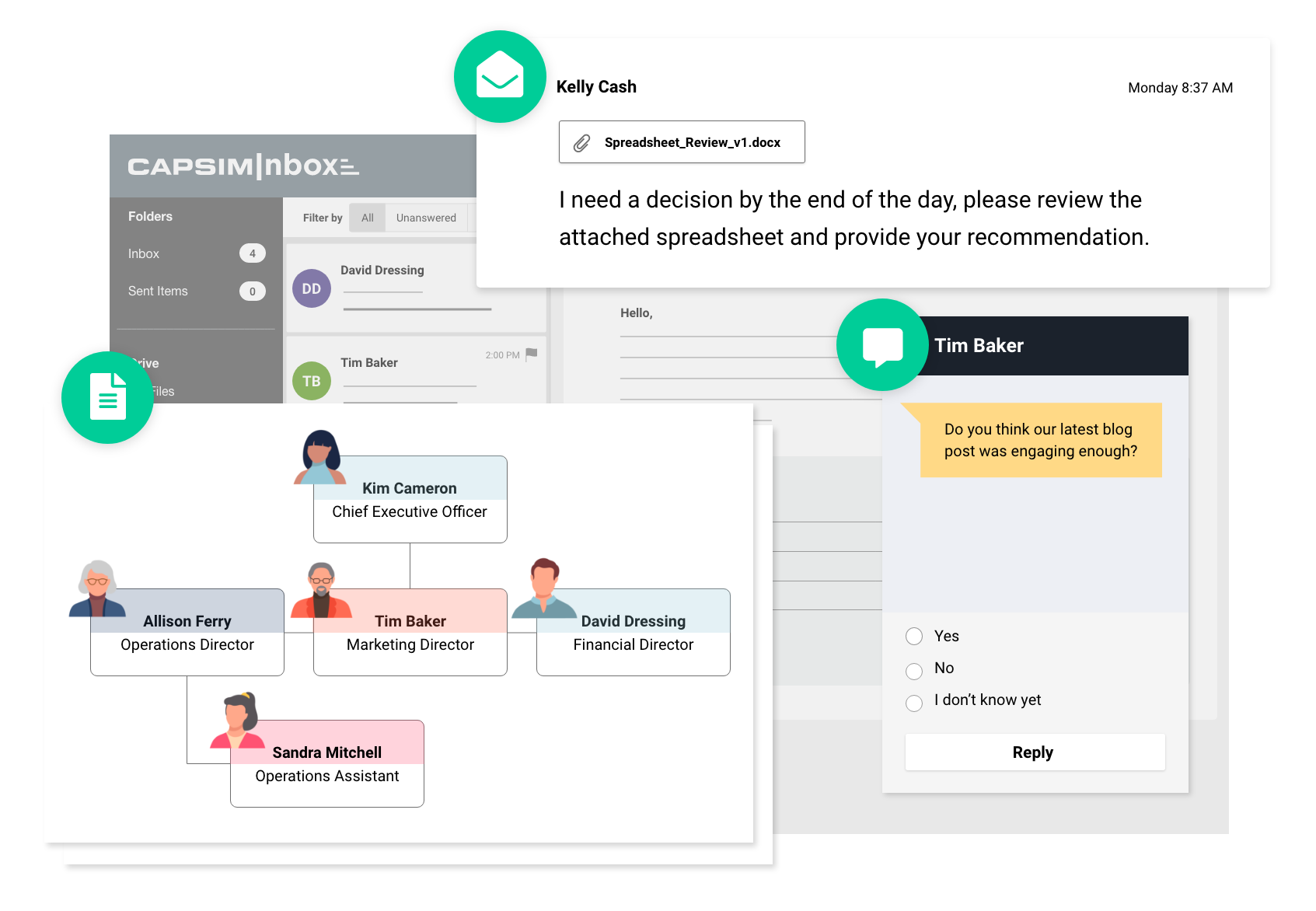Curious About VR Simulation Training? 7 Pros and Cons to Consider
November 3, 2021

Choosing the right tools for your learning and development program is like choosing the right paint color for your living room.
There are hundreds of choices available, and many of them could work while others just don’t match the color scheme.
One of the L&D tools you may have heard of is VR simulation training. Virtual reality is a trending technology for businesses and consumers alike.
But like any L&D technology or tool, there are pros and cons to using virtual reality simulations for professional development. Every business and L&D department is different.
We want to shed more light on VR simulation training as an L&D tool. We’ll look at the pros and cons of virtual reality to give you a better idea as to whether it fits the needs of your L&D program.
Let's Start with the Basics: What is VR Simulation Training?
VR simulation training combines virtual reality technology and immersiveness with life-like situations for training and development purposes. Much like any other type of simulation, VR simulation platforms offer different modules and tracks.
But unlike other types of simulations, VR is delivered through a headset. Learners also use handheld controllers to move through and interact with their 3D environment. Interactions generally include working with simulated tools, machinery, and even other trainees and instructors.
As you can imagine, the functionality ingrained in VR simulation training platforms has many benefits. Let’s take a look at the upside of using virtual reality for learning and development.
Pros of Using VR Simulation Training for Learning and Development
Immersive and Engaging Learning Experiences
What makes a learning experience immersive and engaging? It has to be as life-like as possible to stimulate the learner’s brain and draw them into the experience. Characters, storylines, scenarios, sounds, and visuals all play a role.
VR simulation training combines all of these elements, and adds to it the learner’s ability to move around and interact with their environment. The result is an emotionally engaging learning environment.
Safe, Risk-Free Environment
Repairing electrical wiring. Cleaning up hazardous waste. Responding to natural disasters. All of these situations involve a high degree of risk. So how do you safely train for them while keeping your training realistic?
VR simulations allow you to train employees in high-risk, possibly dangerous situations without putting them in harm’s way. For example, here’s a video showing a VR simulation training for changing an electrical wire on a circuit breaker.
Data Collection and Reporting
While not exclusive to VR simulation training, data collection and reporting is a key benefit we can’t skip over. Since VR simulations are part of a larger training platform, individual learners can see their scores and progress over time, while L&D team members can track training metrics, gain insights, and use employee results to create new development opportunities.
Effective at Upskilling, Including Soft Skills
In a recent PwC study, VR simulations were found to be an effective tool for upskilling and developing highly sought-after soft skills. Specifically, the study found that:
- VR learners completed training four times faster than classroom learners, and one-and-a-half times faster than e-learners.
- Those who use VR simulations were 275 percent more confident to act on what they learned after training.
- VR learners were 3.75 times more emotionally connected and engaged to their content than classroom learners.
Outside of the study, training through VR simulations is an effective upskilling tool for all the reasons we’ve mentioned:
- Simulations are extremely life-like.
- Employees can implement concepts in a “real-world” setting, including in dangerous and hard-to-replicate situations.
- Data tracking and progress monitoring keep employees engaged and chasing improvement.
However, like any development platform or tool, there are also a few negatives to VR simulation training.
Cons of Using VR Simulation Training for Learning and Development
Possibility of Adverse Physical Side Effects
When scenery around you moves, but you’re stationary, the resulting disconnect in your brain can cause motion sickness. It’s the science behind the queasy feeling you may get when riding in a car on a winding road. It’s also a potential side effect of VR simulation training.
Headaches, dizziness, and eye strain are other reported side effects of VR simulation use.
Cost for Development, Equipment, and Maintenance
While virtual reality is more popular than it used to be, it is still an expensive technology to break into. Roundtable Learning did an excellent breakdown of the costs of virtual reality training in 2020, and here’s what they found:
- A 360° virtual reality pilot program ranges in cost from $20,000 to $30,000.
- A comprehensive 360° virtual reality program can run between $30,000 and $75,000.
- The hourly rate for instructional design and programming for VR simulation training modules is between $150 and $300 per hour.
- Production and travel expenses can run $8,000 - $12,000 per day.
- Depending on your vendor, VR headsets can cost between $500 and $1,200, plus a setup and shipping fee of anywhere between $150 and $200 per headset.
Additionally, the PwC VR simulation study also found that to reach cost parity with classroom learning and e-learning, you’d have to train a large number of people.
Additionally, how long are you willing to wait? VR simulation companies do have off-the-shelf simulations available, but custom simulations can take months to build out. This time cost also cannot be ignored as a downside of VR simulations.
RELATED: How Much Does VR Soft Skills Training Cost?
Lack of Scalability
Given the costs of VR simulations and the equipment that goes along with them, it’s hard to call it a scalable training solution. It can be if all your employees are in one location, which minimizes the need for high numbers of VR headsets.
But as more companies have embraced hybrid and fully remote workforces, scalability becomes a larger problem.
What's Your Verdict on VR Simulation Training?
Are VR simulations effective tools for learning and development? Yes. Are they expensive tools for learning and development? Also, yes.
VR simulation training can be a great tool as part of a blended L&D program if you have a large enough budget and centralized workforce. Otherwise, you can be blowing a huge portion of your L&D budget. While the effectiveness, engagement, and immersiveness of VR simulation training can’t be argued or understated, it’s not the right solution for everyone.
If you don’t have the budget and can’t wait months for a premium VR simulation, take our self-guided inbox simulation demo for a spin.
It’s been scientifically-validated and uses a familiar email inbox interface to deliver micro-sized simulations. CapsimInbox is also easily customizable, using a no-code framework to help anyone on your L&D team build out unique simulations without the wait.





.png?width=80&name=1-questions%20(1).png)